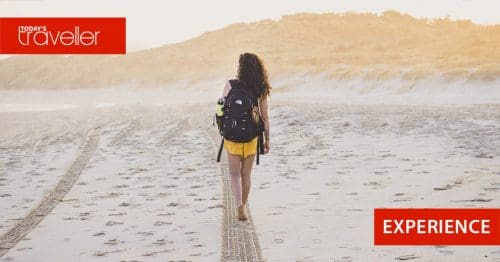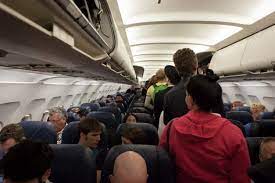
Indian travellers have come of age, spending approximately $94 billion in 2018, on around 2 billion domestic and international trips, helping the Indian travel and tourism industry achieve unprecedented scale.
The momentum is expected to continue and the industry will grow at a 13% CAGR to $136 billion by 2021 with heavy expenditure in online travel mediums, according to a report, ‘How Does India Travel’, released by Bain & Company and Google India.
The report outlines how India spends on travel, the influence of online channels in their purchase journey and potential growth opportunities for travel businesses till 2021.
Deep diving into the $136 billion spends, the report cites a 12% in transportation ($50 billion), 13% growth in lodging ($21 billion) and consumption, which includes spends on shopping, recreation and food, to grow at 13% ($65 billion) over the next three years.
Additionally, as more people come online, smartphone penetration improves and the use of digital payments goes up, the report estimates that Indian travellers will spend an additional $24 billion on online travel bookings over the next three years, a growth from 25% in 2018 to 35% in 2021.
Online is a significant source of research for Indian travellers
Elucidating the planning journey of the Indian traveller, both for business and leisure, the report calls out five phases of a customer’s journey – Interest, Research, Booking, Experience and Sharing.

The report states that during the key research-heavy phases of interest, research, and experience, digital plays a pivotal role with over 86% of consumers being influenced by online channels. During this phase, travellers spend their maximum time on search, travel tour provider websites, price comparison websites, and travel articles.
Online video plays a significant role as well with 21% of travellers being influenced by this platform. In the booking and sharing phase, the report states that nearly 60% of customers book transport and lodging online, and over 50% share feedback online with social media being the dominant platform.
Talking about the market opportunities for online travel players, Vikas Agnihotri, Country Director – Sales, Google India said, “New users perceive that online channels are geared towards the more frequent flyers and experience-oriented travellers, and existing travellers research online but the lack of trust in payments and booking experience make them end up booking offline.”
He added, “If travel players tap these online users through personalised marketing, messaging and travel plans, they can further augment online travel bookings. This can be done by adopting digital technologies to influence customers early in the journey and moving from one-time engagement to ongoing relationships to have a positive impact.”
“There is a perception among consumers that online channels are geared towards premium customers, along with a marked distrust around payment and pricing terms. It is imperative for businesses to address these concerns in order to effectively tap into the growing base of users.” Arpan Sheth, Partner Bain & Company said.
Decoding Indian travellers
The report further identified the five cohorts of travellers in India, across business and leisure travel, and categorised each against their online research behaviour:

- Frequent flyers: Nearly 70% of them booked online, cumulatively spent $17 billion in 2018. They make their choices based on convenience, availability, brand preference and past experiences.
- Budget business traveller: 86% of them researched online whereas only 60 percent book online, cumulatively spent $20 billion in 2018. This cohort makes their decisions based on cost of travel, availability and consultation amongst their personal business network.
- Experience-oriented traveller: Around 70% of their bookings were done online. and cumulatively spent $22 billion in 2018. They extensively research both online and offline for ‘authentic’ experiences and convenience of options; display high loyalty towards preferred brand of airlines or hotels and actively share experiences.
- Budget group traveller: 90% researched online and 55% booked online, cumulatively spent $29 billion in 2018. They make multiple decision-makers in the process and take the final decisions based on minimal cost.
- Occasional travel visiting friends/relatives: 92% researched online but only 60 percent booked online, spent $6 billion in 2018. They maximize family convenience within a budget and believe online terms and conditions are restrictive.
However, challenges remain in meeting the expectations of Indian travellers in online travel:
Customers perceive online travel channels geared towards premium cohorts (frequent flyers and experience-oriented travellers), while mass cohorts, with $55 billion in spending, remain underpenetrated. There are about 160 million non-transacting active Internet users in India with only 5 per cent from Tier-2 or Tier-3 cities avail online travel.
There is a significant (20%) difference between the booking rates of premium cohorts and mass cohorts, the latter being also dissatisfied with online channels (~33%) vs. premium cohorts (~42%).

The second challenge is in penetrating existing users who exhibit a marked distrust in the use of online travel channels to make bookings, especially around payment and pricing terms and booking experience compared with offline channels.
Consequently, their online usage drops between the research ( 86 percent online influence) and booking phases (~40% offline bookings).
How travel businesses need to adapt to the needs of consumers availing online travel methods
The report cites five major shifts that marketers need to make in order to market to online travellers –
First, alleviate consumer concerns by improving the booking and payment experience to build a trusted brand and increase adoption.
Second, they need to address the negative customer perception issues by mass customisation to drive a higher share in the segment.
They also need to utilise consumer technology to penetrate mass segments (standardise, enable sharing), reach non-transactors (build offline presence), and create new user access.
Moreover, they need to find innovative and frugal ways to package the experience to increase both adoption and retention of online travel options.
Finally, they need to create a robust digital backend to adapt to customer needs across the purchase journey.
“The contribution of travel and tourism’s spend in India has reached developed market levels, from 6.7% of GDP in 2013 to 9.4% in 2018. This growth, combined with a rapidly growing internet user base and adoption of online bookings will lead to $24 billion in incremental revenues through online channels by 2021. In order to benefit from this trend, businesses need to actively increase new user adoption and increase penetration in the existing user base across the purchase journey,” said Joydeep Bhattacharya, Partner Bain & Company.
Report Methodology:
This report was commissioned by Google India Pvt. Ltd. and Bain and Company conducted the overall research and analysis, interviewed industry experts for qualitative inputs and authored the report. The quantitative survey and primary interviews with customers and offline travel agents were conducted by Kantar IMRB.
Read More: News



